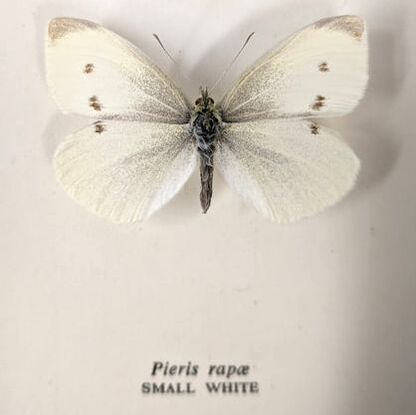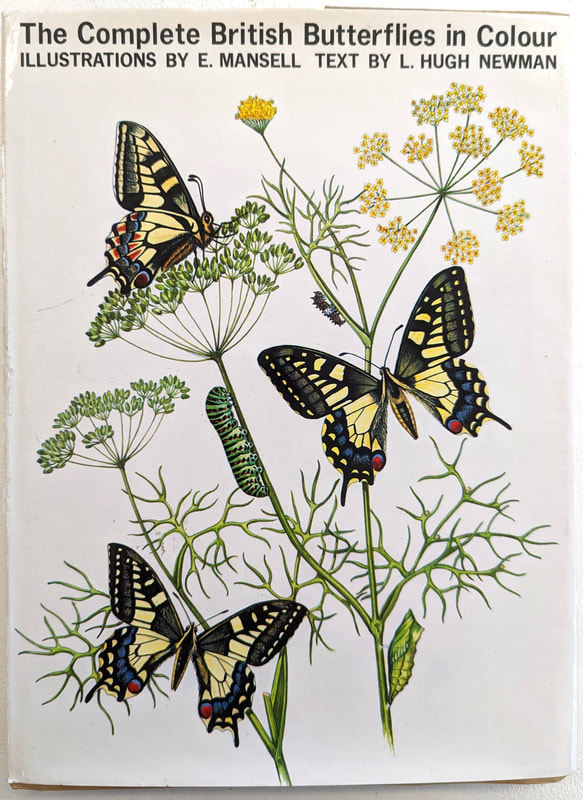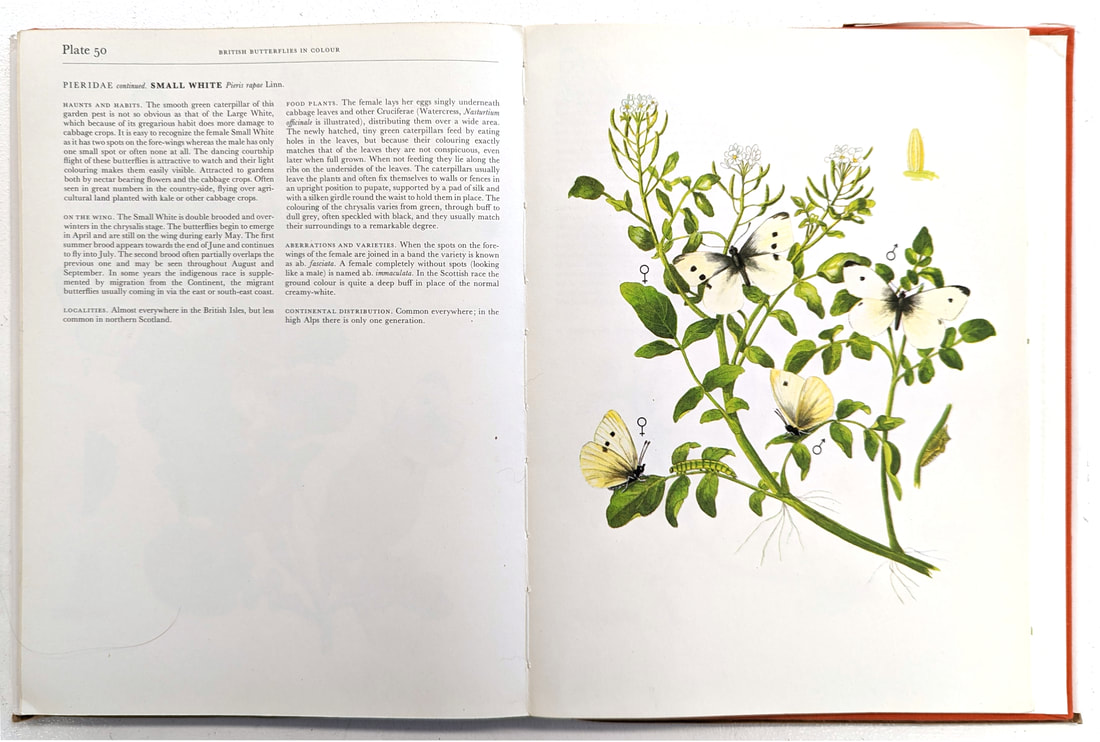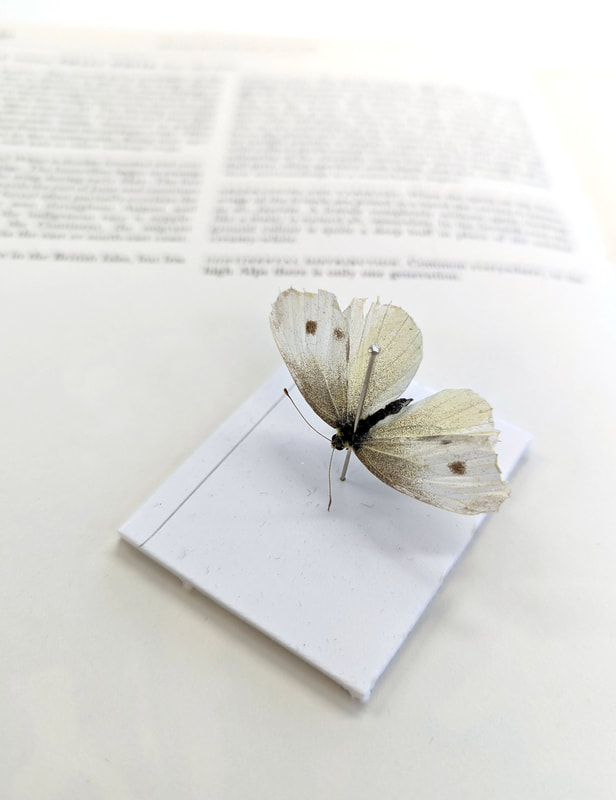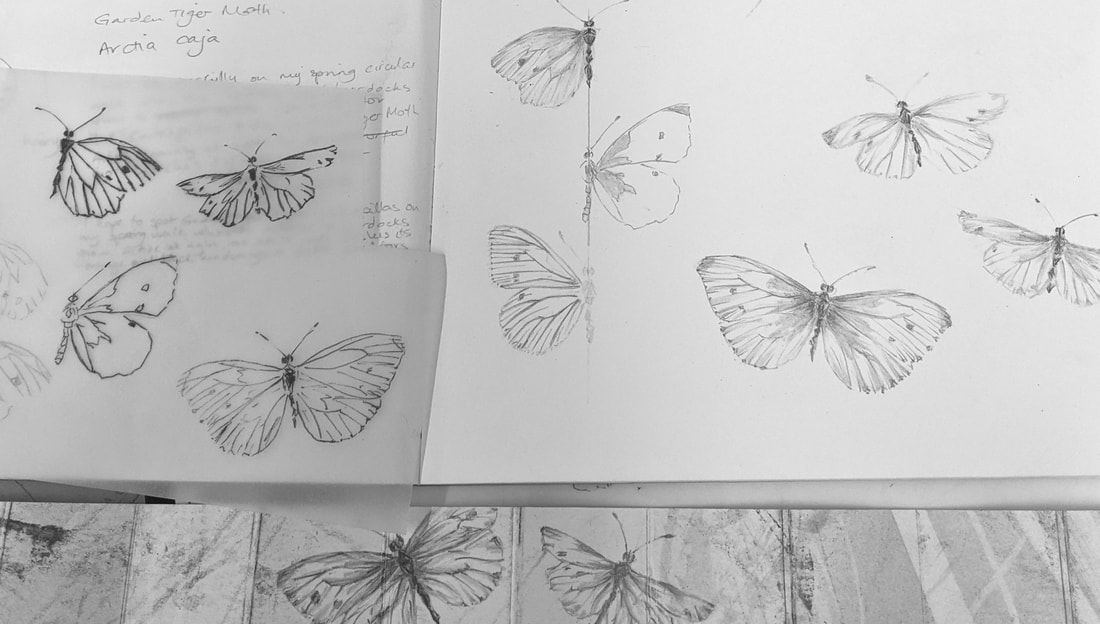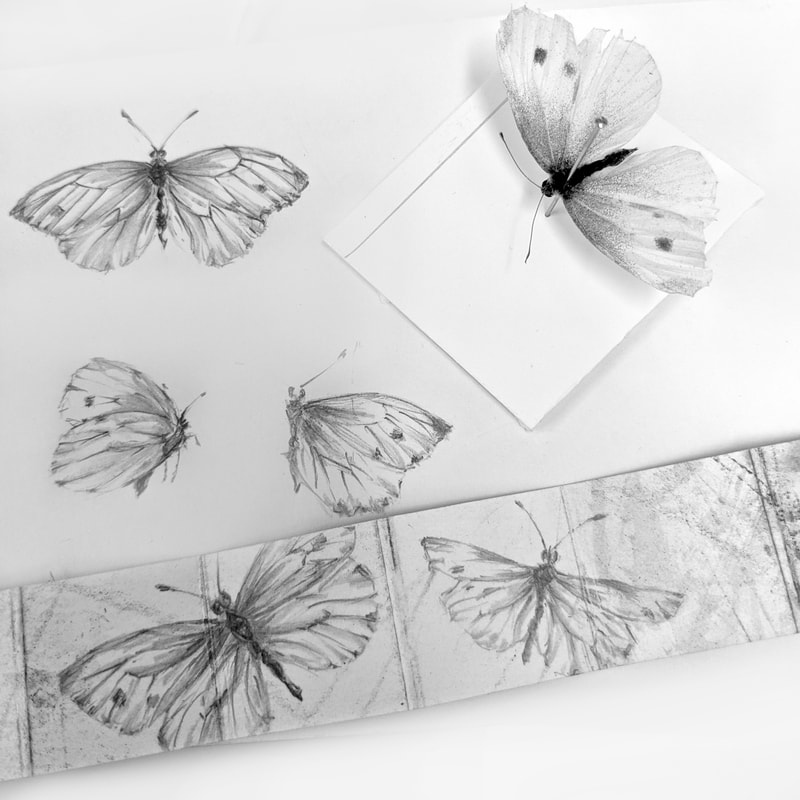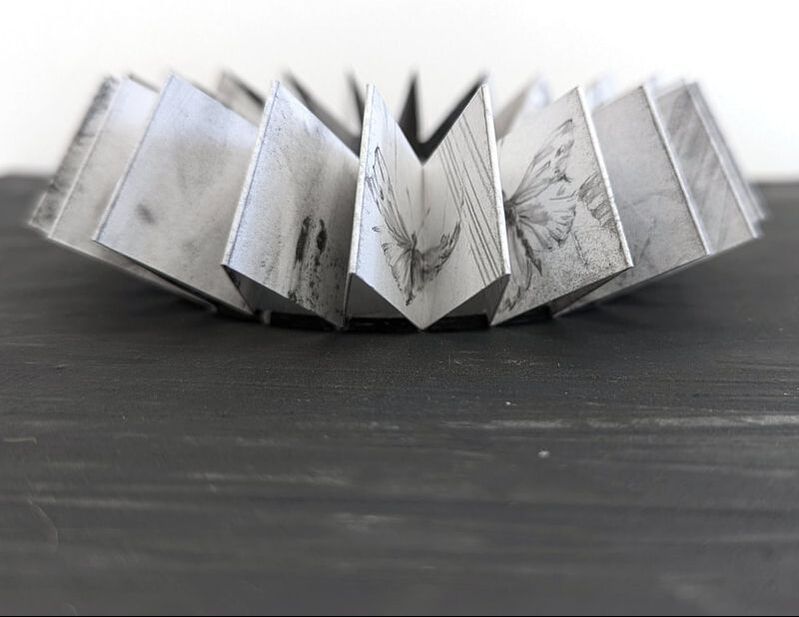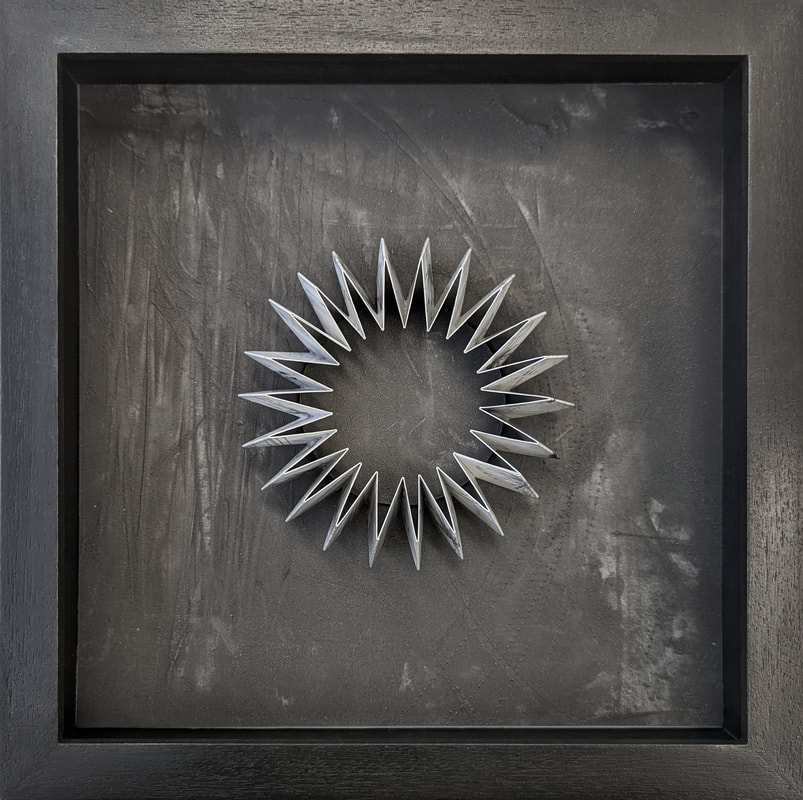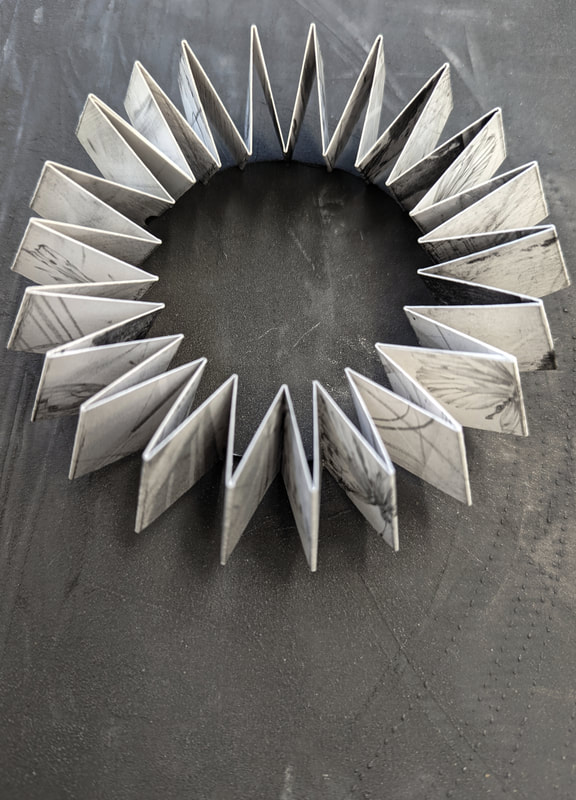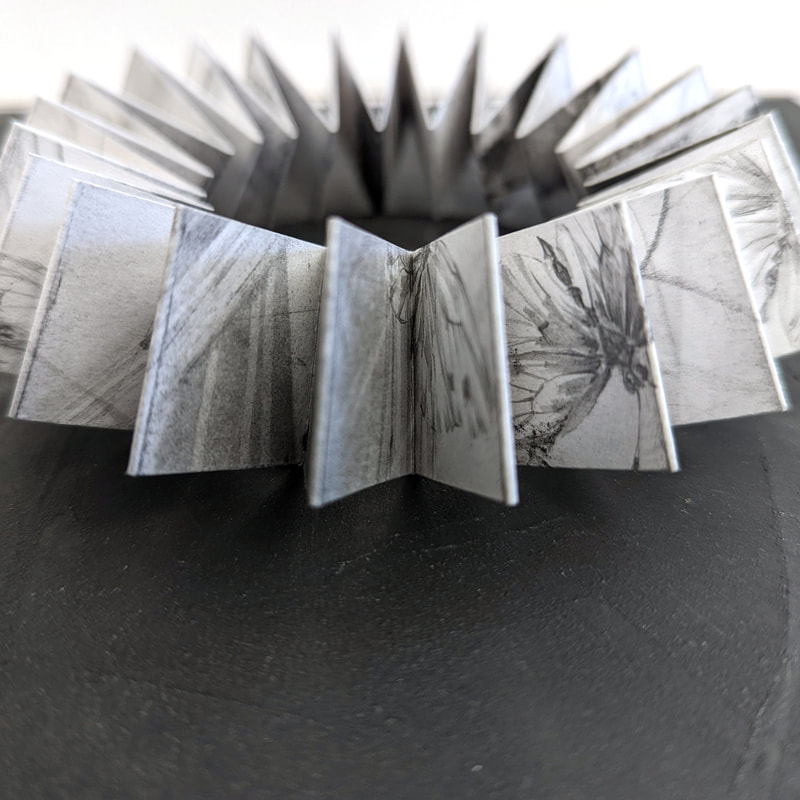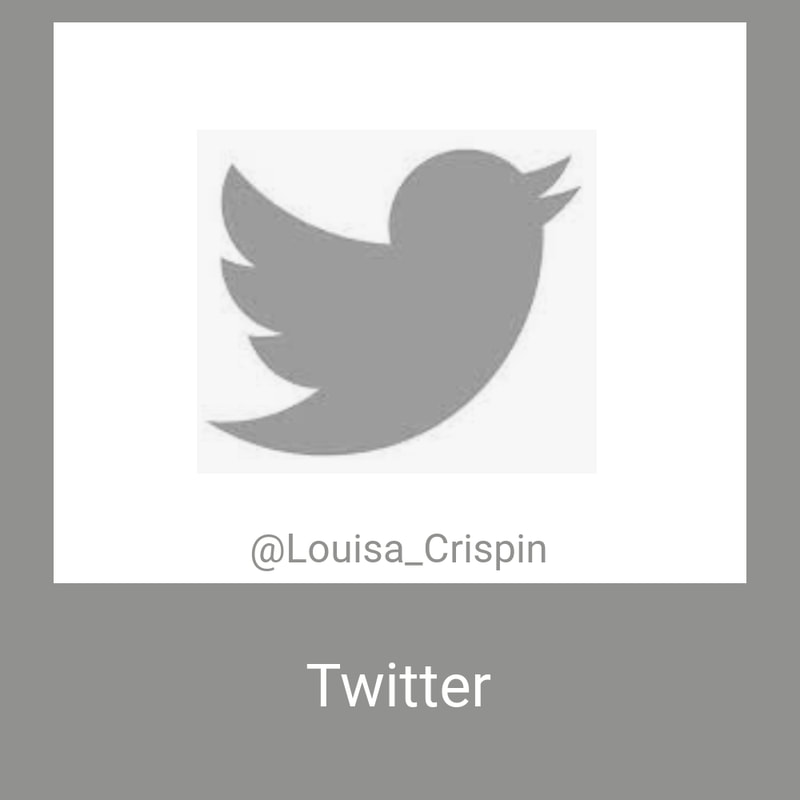|
I have plenty of butterfly specimen in my studio and they are lovely to draw. So maybe it was simply the reference to "colour"? Their lack of spiky or stingy bits or just that they are not controversial and I didn't feel there was a message to share? But I'm getting ahead of myself here. Lets back track ... In July 2021 I was invited to take part in an exhibition at Salisbury Museum organised and curated by Prudence Maltby, Dr Elisabeth Darby alongside Dr Michael Darby. In their words: INSECT ODYSSEY This exhibition offers an insight into the visual responses and interpretations from twenty contemporary artists and makers to the publications which, since the 17th century, have recorded and illustrated these intriguing creatures. Often works of art themselves, these entomological books have elicited new creations which pay homage to these little treasure houses of nature. Species are dying out as a result of global warming, pollution, and loss of habitat but, at the same time, new ones are being discovered: the flora and fauna of our planet is in a constant state of flux. Entomologists across the globe are engaged in collecting, examining, classifying and naming previously unknown insects. A new species is only legitimate once it has been published in scientific journals and books. These academic publications spawn more popular illustrated guides to the butterflies, beetles, bees, bugs and other insect populations. Most of the living organisms on Earth are insects. Some are destructive, parasitic and carriers of disease, but others play a vital part in the eco-system; they are essential for pollination and as food for other creatures, including mankind. The structure and habits of insects have inspired scientists, architects and engineers and have fascinated artists working in diverse disciplines for generations. Each invited artist would receive a book/journal with guidelines. They would be invited to submit their completed pieces, inspired by the project concept. It was during the Big Butterfly Count 2021 that I realised the normally abundant Cabbage Whites were not making their usual appearance and that set me thinking about how many gardeners (especially allotment holders) would be particularly pleased with this outcome. My artistic focus is often on abundant species, those we consider pests and how they can suddenly disappear while our attention is elsewhere. In 2021 I had considerably fewer Cabbage Whites compared to 2020, possibly because I was late planting my Brassicas. It made me wonder. I focused on the Small White (Pieris rapae), working from specimens I have found in my garden alongside photos and sketches made during the summer. As adults, butterflies have long curling proboscis, which they use like a straw to feed on nectar and juice from rotting fruit, so it is their young that inflict the damage during the caterpillar phase of development. More commonly known as the Cabbage White, the Small White lays its eggs on members of the Cabbage family (Brassicaceae) and can decimate a crop, although it is less destructive that the Large White butterfly. An old gardening trick is to grow Nasturtium (Tropaeolum majus) nearby which are equally attractive and a kindly gardener will simply transfer across any caterpillars found on crops. The Small Whites are pretty butterflies, dancing around the garden as they search for mates and twirling together in the sunshine before flitting around the vegetation ready to lay a single egg on each leaf. The essense of summer. Currently they seem plentiful but their occurance trend since 1976 is down 8%, with their abundance dropping by 25% between 1976 and 2014 (source: UK Biodiversity Action Plan) The Big Butterfly Count 2021 recorded the lowest numbers since the count started in 2009 and despite being top of the list, the Small White had dropped 5% below 2020 figures (with the Large White dropping 15%) (source: Big Butterfly Count 2021 sees lowest ever number of butterflies recorded). A timely reminder that we should take nothing for granted. We must continue to monitor, make changes and teach others to see. We must provide food for both adults and caterpillars as well as places to pupate to enable insects to migrate through our towns and countryside. Otherwise we will only catch glimpses of these beautiful, delicate dancers. About the FlightPath "Glimpse" series of work: My work focuses on drawing nature and exploring the properties of graphite, with an interest in gently encouraging people to look closer. It is impossible to draw from nature without becoming entwined in its world; the very act of looking closely makes me wonder at their structure and purpose It is impossible to draw nature without becoming entwined in its world; the very act of looking closely makes me wonder at the structure and purpose of flora and fauna. I remember a time when insects plastered the car windscreen at night, when sparrows were plentiful and wild flowers freely picked; my children have never experienced this. The fluffy bumblebee became a poster girl for saving the planet but we need to teach people to love all the creatures, even those that sting or bite and appear to have no useful purpose. A small piece of paper becomes a nature corridor. The graphite marks represent buildings, roads, paths, barriers to wildlife. It becomes difficult to find space for the insects and we are required to look closely at the folded pieces to find them, to catch a glimpse of something once plentiful. Glimpse FPS022 Insect Odyssey - insects, books and the artistic imagination 25 June to 25 September 2022 The Salisbury Museum The King's House, 65 The Close, Salisbury SP1 2EN www.salisburymuseum.org.uk PROJECT COORDINATORS PRUDENCE MALTBY Artist/Curator. From her Salisbury studio she spends her time drawing and painting as well as curating exhibitions and coordinating visual arts projects, both nationally and internationally. She has gained several awards from Zimbabwe and England and has work in both private and public collections. She studied at Winchester School of Art. She is currently preparing a new body of work for a London exhibition in 2022 Her interest in bugs began as a child watching her grandfather, the sculptor, Joseph Cribb collecting and recording beetles. It’s believed that Cribb began collecting in the Somme Valley whilst serving in the Royal Sussex Regiment WW1. Dr MICHAEL DARBY Entomologist. Michael specialises in coleoptera and is an expert on the miniscule beetle family Ptiliidae, of which he has described more than 400 new species. He has published numerous books and papers, including the Biographical Dictionary of British Coleopterists. He is a Scientific Associate at the Natural History Museum in London, Council member of the British Entomological and Natural History Society and Fellow of both the Linnean and the Royal Entomological Societies. He was formerly attached to the Wiltshire and Swindon Biological Records Centre as county beetle recorder, was natural history editor of Wiltshire Studies and also worked for the Wiltshire Wildlife Trust. Dr ELISABETH DARBY Design Historian and Lecturer. Lis’s research and teaching focuses on 19th, 20th and 21st century decorative arts, design and craft. She teaches primarily at Sotheby’s Institute of Art (where she was Programme Director of the MA in Contemporary Design from 2008 to 2016), lectures regularly at the Victoria and Albert Museum, and is also Visiting Researcher and PhD supervisor at Central St. Martins (University of the Arts London). She has contributed to various publications on design and the decorative arts and her book Re-Issue, Re-Imagine, Re-Make: Appropriation in Contemporary Furniture Design was published by Lund Humphries in 2020.
0 Comments
Your comment will be posted after it is approved.
Leave a Reply. |
Studio BlogWhen there's something happening in the studio you might like to know. If you would like irregular email updates for this blog and/or my Nature Diary or FlightPath Project, you can sign up here:
Archives
January 2024
Categories
All
|
Louisa Crispin
|
Oak Cottage, Talbot Road,
Hawkhurst Kent TN18 4LU (UK) |
|
